Retro Breakfast Road Trip: 27 Classic Morning Meals Still Worth Tracking Down
Remember when breakfast wasn’t just rushed toast or a protein bar? America’s diners and mom-and-pop restaurants once served morning meals that were events in themselves. These classic breakfasts represent a time when people sat down together, savored every bite, and started their day with something special.
While some of these beloved dishes may be harder to find these days, they’re absolutely worth the hunt—and the calories!
1. The Full Country Breakfast
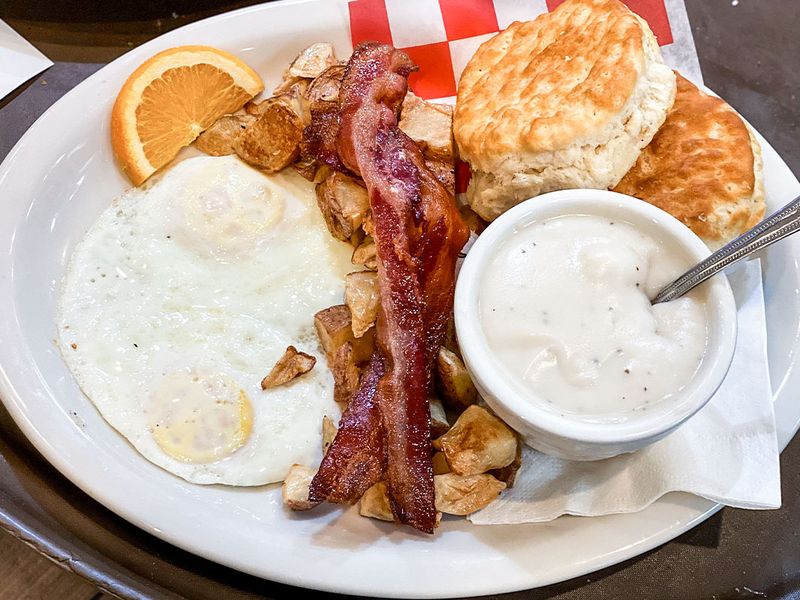
Nothing beats waking up to eggs, bacon, hash browns, biscuits with gravy, and maybe some grits or pancakes on the side. This hearty feast originated with farmers who needed serious fuel before a day of physical labor.
Many family-owned diners still serve this calorie-packed classic exactly as they did 50 years ago. The portions are usually enormous—enough to keep you satisfied until dinner!
For the authentic experience, look for places with worn vinyl booths and waitresses who call you “hon.” These spots often make everything from scratch, just like grandma used to do.
2. Chicken and Waffles
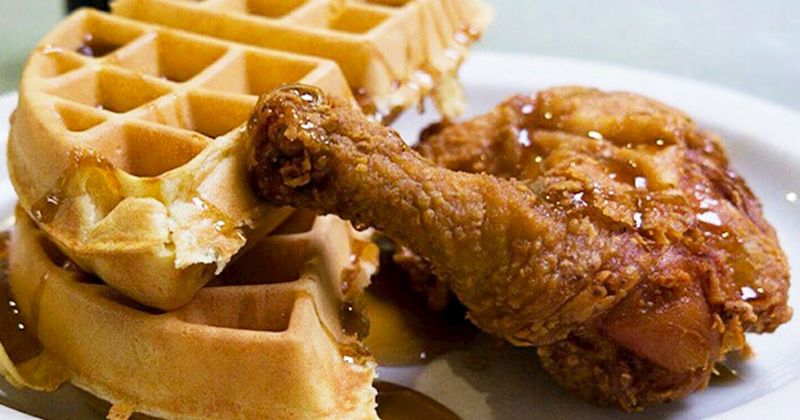
What seems like a strange combination today has actually been around since the 1930s in Harlem’s jazz clubs. Performers finishing late-night sets wanted something between dinner and breakfast, and this perfect sweet-savory mix was born.
The best versions feature crispy fried chicken with a light, seasoned coating perched atop fluffy waffles. Maple syrup drizzled over both creates that magical flavor contrast that keeps people coming back.
While fancy restaurants now serve gourmet versions, hunt down the old-school spots where they’ve been making it the same way for generations.
3. Corned Beef Hash with Eggs
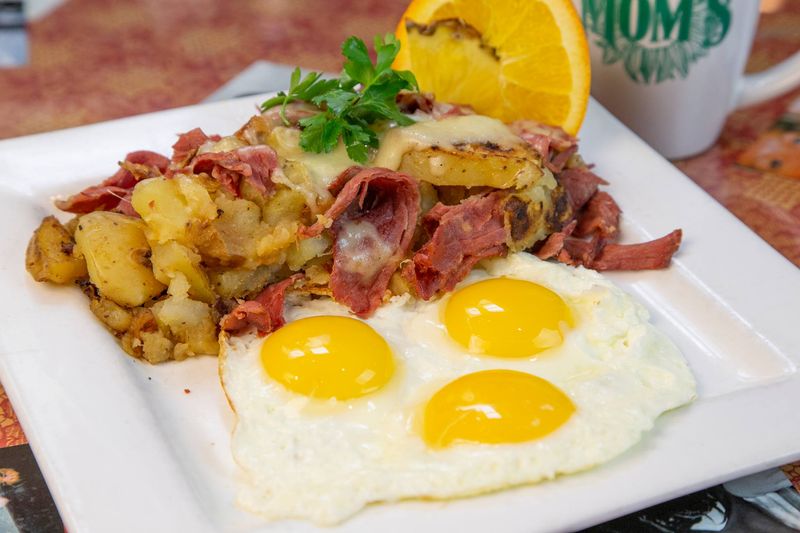
During World War II, when meat was rationed, clever cooks created this dish to use every scrap of precious corned beef. The crispy potatoes, tender meat, and runny egg yolks make for the ultimate comfort food breakfast.
Real hash should be made fresh—not from a can—with chunks of house-made corned beef mixed with diced potatoes and onions, all fried until the bottom forms a delicious crust. The eggs should be perfectly fried, with whites set and yolks ready to burst.
Jewish delis and old-school diners usually serve the most authentic versions of this classic.
4. Buttermilk Pancakes
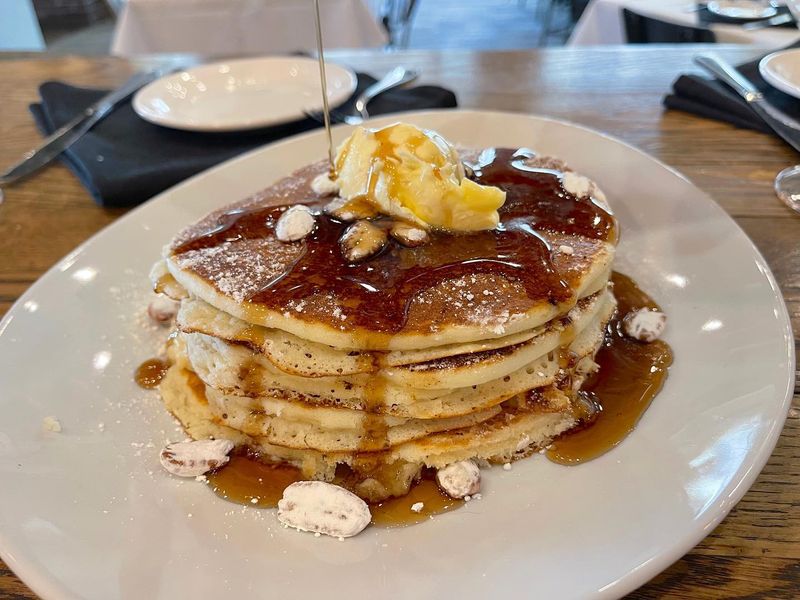
Before boxed mixes took over, pancakes were made from scratch with real buttermilk that gave them that distinctive tangy flavor and fluffy texture. The best places still make them this way, using recipes passed down for generations.
A proper stack should be golden-brown outside and cloud-like inside, served with real butter that melts into every layer. Pure maple syrup—not the artificial stuff—is the only acceptable topping at these traditional establishments.
Look for diners where the pancakes hang over the edge of the plate and are at least half an inch thick. That’s the sign of truly authentic buttermilk pancakes.
5. Biscuits and Sawmill Gravy
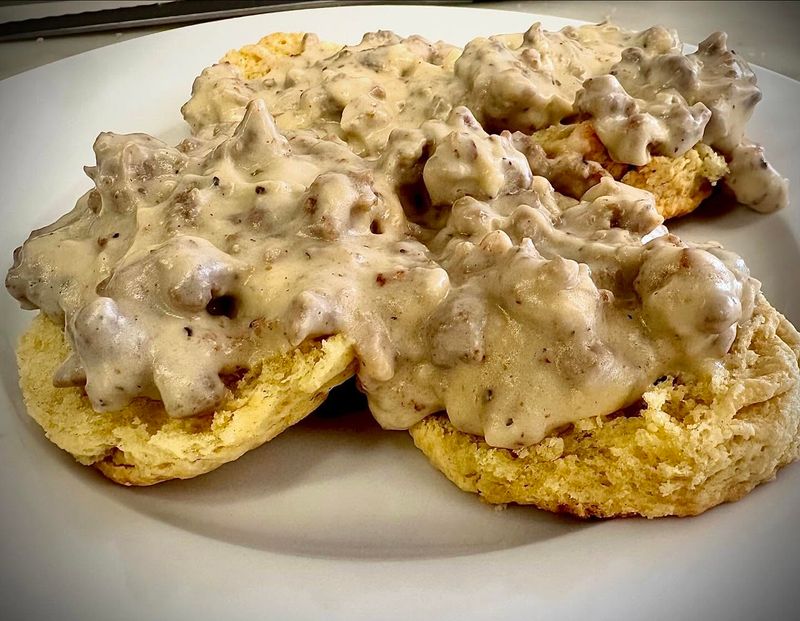
Southern lumber camps fed hungry workers this filling dish because it was cheap and easy to make with simple ingredients. Real sawmill gravy contains small pieces of sausage in a pepper-flecked white sauce that’s neither too thick nor too runny.
The biscuits should be tall, flaky, and made by hand—never from a tube. When done right, they split perfectly in half, creating a bed for that creamy gravy to settle into.
Many places claim to have the best, but look for spots where they’re not afraid to use lard in the biscuits and plenty of black pepper in the gravy.
6. Eggs Benedict
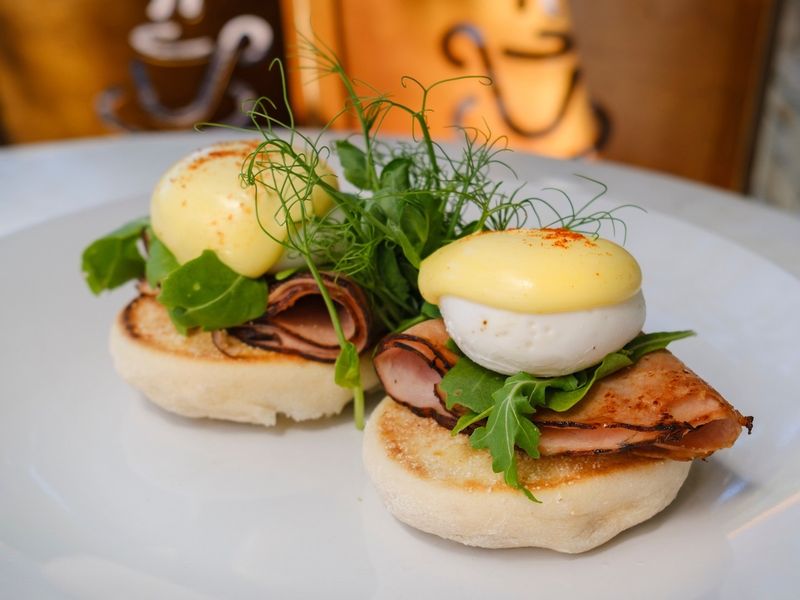
Created at New York’s Waldorf Hotel in the 1890s, this luxurious breakfast hasn’t changed much in over a century. The classic version features an English muffin topped with Canadian bacon, a perfectly poached egg, and hollandaise sauce.
Making good hollandaise is tricky—it should be buttery, lemony, and just thick enough to coat the back of a spoon. Many places now cut corners with powdered mixes, but traditional restaurants still make it fresh by hand.
For the real deal, seek out establishments where they poach the eggs to order and make hollandaise in small batches throughout the morning.
7. Huevos Rancheros
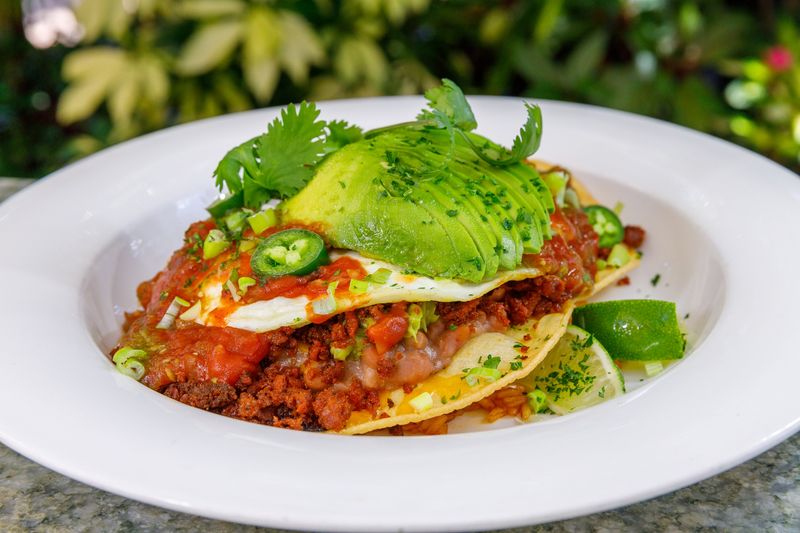
Mexican ranch hands started their day with this protein-packed breakfast that’s now beloved across America. The authentic version features corn tortillas topped with fried eggs, salsa roja, and often refried beans and avocado.
Great huevos rancheros should have a perfect balance: crispy tortilla edges, runny egg yolks, and a salsa that’s flavorful without overwhelming the dish. When the yolk breaks and mixes with the salsa, it creates a sauce that’s heaven with each bite.
Family-owned Mexican restaurants often serve the most traditional versions, especially in the Southwest where the dish originated.
8. Sourdough French Toast
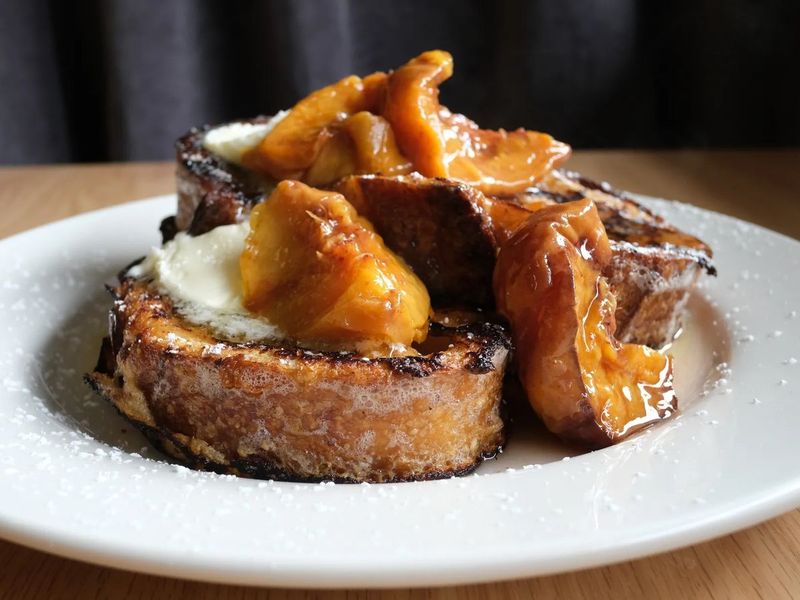
San Francisco’s famous sourdough bread makes for French toast with a distinctive tangy flavor that balances perfectly with sweet maple syrup. The tradition dates back to Gold Rush days when miners wanted something special for breakfast.
Thick-cut slices should be soaked just long enough in a vanilla-scented egg mixture to create a custardy interior while maintaining a slight chew. The outside gets caramelized to a golden brown, creating wonderful texture contrast.
Look for diners and breakfast spots that source real sourdough from local bakeries—the bread should have visible holes and that signature sour smell.
9. Hash Brown Casserole
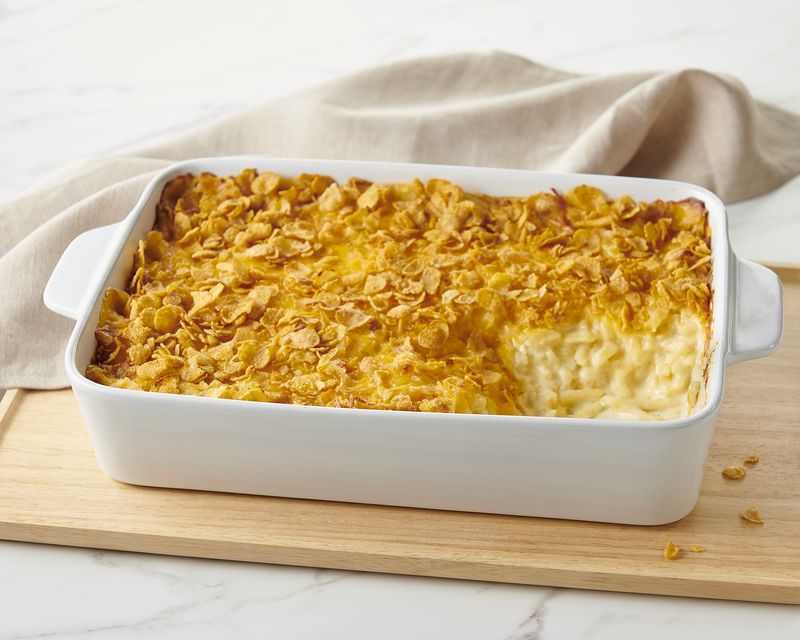
A staple at Cracker Barrel since the 1980s, this cheesy potato dish has earned cult status among breakfast lovers. The original combines shredded potatoes with cheddar cheese, sour cream, and onions, all baked until golden and bubbly.
What makes it special is the contrast between the crispy top layer and the creamy interior. Many family restaurants across the country have their own versions, often guarding the recipe like a family secret.
While chain restaurants still serve decent versions, look for mom-and-pop diners where they make it from scratch daily. The best ones have a hint of garlic and just enough cheese to be indulgent without overwhelming.
10. Cream Chipped Beef on Toast
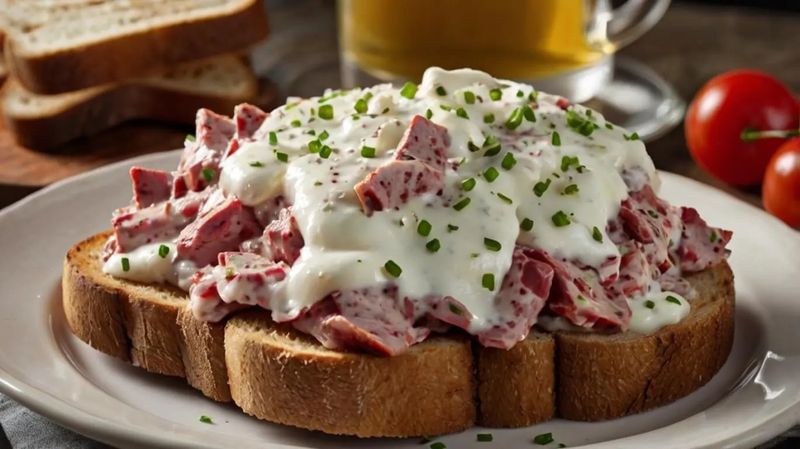
Often lovingly called “SOS” by military veterans (we’ll let you guess what that stands for), this humble dish sustained American troops through multiple wars. Thinly sliced dried beef is rehydrated and mixed into a creamy white sauce, then served over toast.
Good versions balance the saltiness of the beef with a rich, creamy sauce that’s neither too thick nor too runny. The toast should maintain some structure under the sauce rather than dissolving immediately.
Military-adjacent towns often have diners where veterans gather to enjoy this nostalgic dish made exactly as they remember it from their service days.
11. Blueberry Buckle
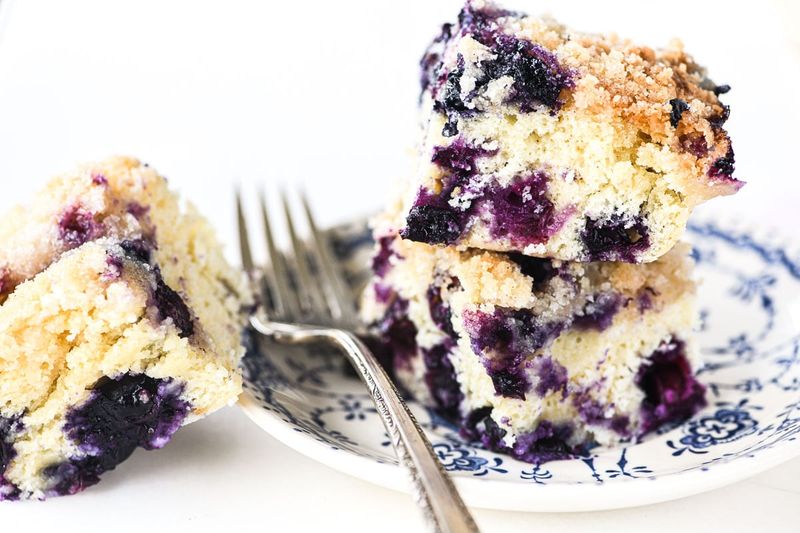
Before muffins became the grab-and-go breakfast of choice, New Englanders enjoyed this homey cake studded with fresh blueberries and topped with a crumbly streusel. The name comes from how the batter “buckles” around the berries as it bakes.
The best versions use wild Maine blueberries, which are smaller and more intensely flavored than their cultivated cousins. The cake part should be moist and buttery, while the topping provides a sweet, cinnamon-scented crunch.
Small-town bakeries throughout Maine, New Hampshire, and Massachusetts often still make this the old-fashioned way, especially during blueberry season.
12. Johnnycakes
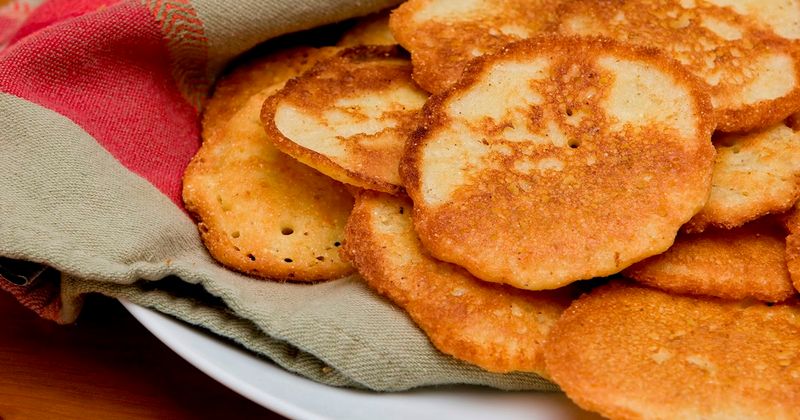
Native Americans taught early colonists how to make these cornmeal pancakes, which became a staple in New England. Unlike fluffy wheat pancakes, johnnycakes are thinner and have a distinctive grainy texture from the stone-ground cornmeal.
Rhode Island natives argue passionately about the proper recipe—some insist on white cornmeal while others demand yellow. Some make them thin like crepes, others prefer them thicker.
The most authentic versions are cooked on a well-seasoned griddle and served simply with butter and maple syrup. Look for them in small-town diners throughout Rhode Island and Connecticut, where recipes have remained unchanged for generations.
13. Creamed Finnan Haddie
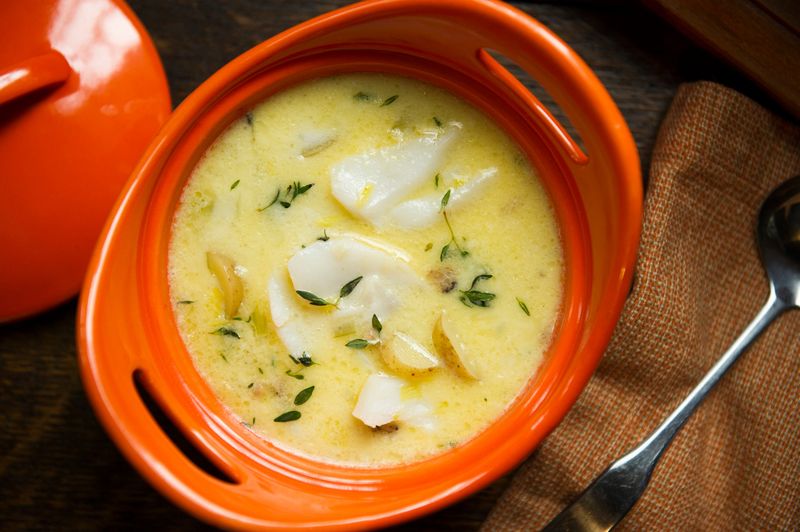
Scottish immigrants brought this smoked haddock dish to New England, where it became a breakfast staple in coastal towns. The smoky fish is gently poached in milk or cream, creating a rich, flavorful sauce.
Traditional preparations serve it over toast points or with boiled potatoes on the side. The best versions use high-quality smoked haddock that’s flaky and moist, never dry or overly salty.
This breakfast delicacy has nearly disappeared except in a few historic inns and restaurants along the Maine coast. When you find it, you’re experiencing a true piece of New England culinary history that dates back to the 19th century.
14. Scrapple
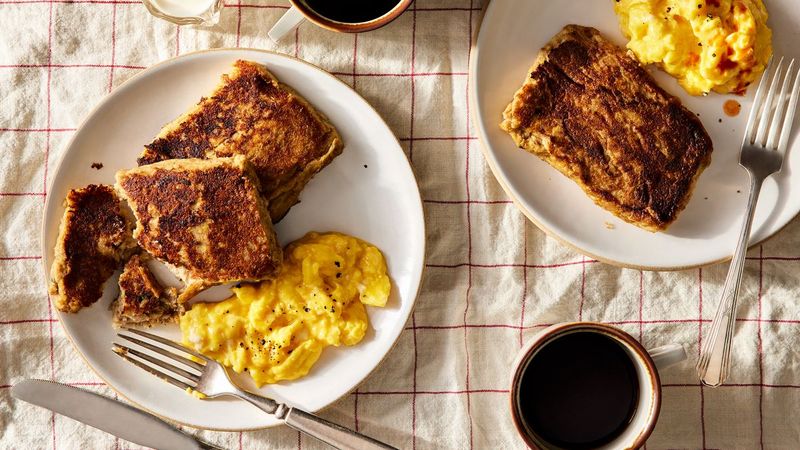
Pennsylvania Dutch farmers created this waste-not breakfast meat that combines cornmeal with every usable part of the pig. The mixture is formed into loaves, cooled, then sliced and fried until crispy outside and soft inside.
Devoted fans know the only proper way to eat it is fried in butter until the exterior forms a crunchy shell while the interior remains creamy. Some add ketchup or maple syrup, while purists take it plain.
Find the real thing at Pennsylvania diners and farmers’ markets in the Mid-Atlantic states. Each family and restaurant has their own closely guarded recipe, often passed down through generations.
15. Grillades and Grits
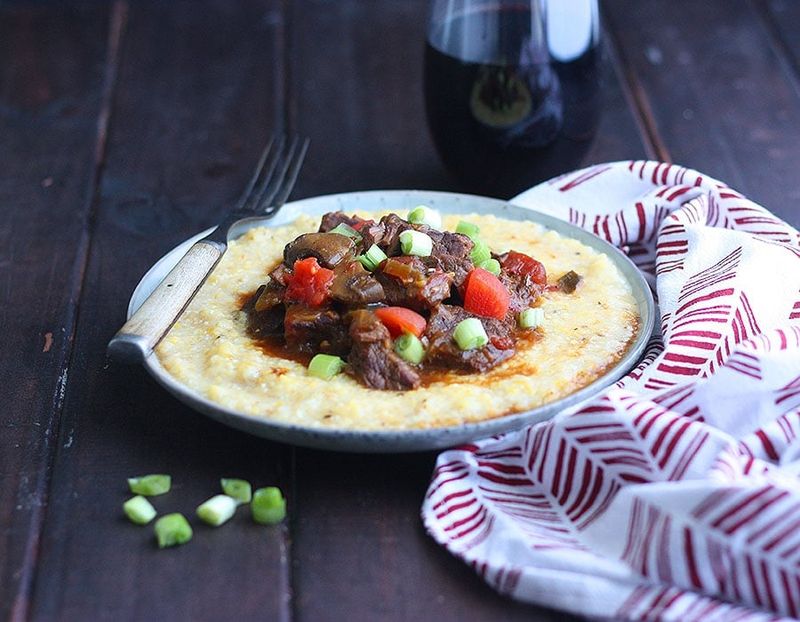
Sunday mornings in New Orleans often start with this Creole breakfast featuring tender medallions of beef or veal simmered in a rich tomato gravy served over creamy grits. The dish represents the perfect marriage of French cooking techniques with Southern ingredients.
The meat should be fork-tender from slow cooking, while the gravy needs that distinctive Creole flavor from the “holy trinity” of bell peppers, onions, and celery. Stone-ground grits provide the perfect creamy base to soak up all that flavorful sauce.
Look for this dish in old-line New Orleans restaurants, especially those that serve traditional Creole Sunday brunch.
16. Loco Moco
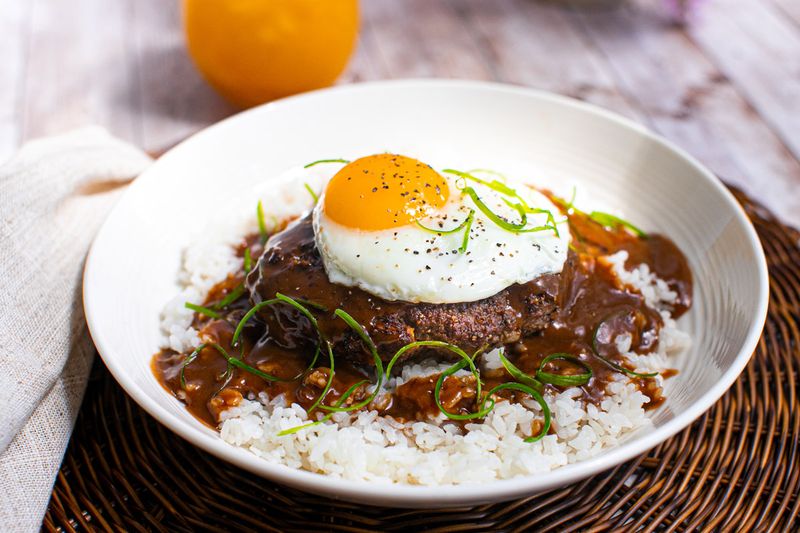
Created in Hilo, Hawaii in the late 1940s to satisfy hungry teenagers, this hearty breakfast stack features white rice topped with a hamburger patty, fried egg, and brown gravy. The name has nothing to do with the ingredients—”loco moco” was just a catchy phrase that stuck.
The best versions use high-quality beef for the patty and make the gravy from scratch. When you break the egg yolk, it should run into the gravy, creating a rich sauce that flavors the rice below.
While now available throughout Hawaii, traditional spots on the Big Island still make it the old-fashioned way—simple, filling, and perfect after a morning of surfing.
17. Migas
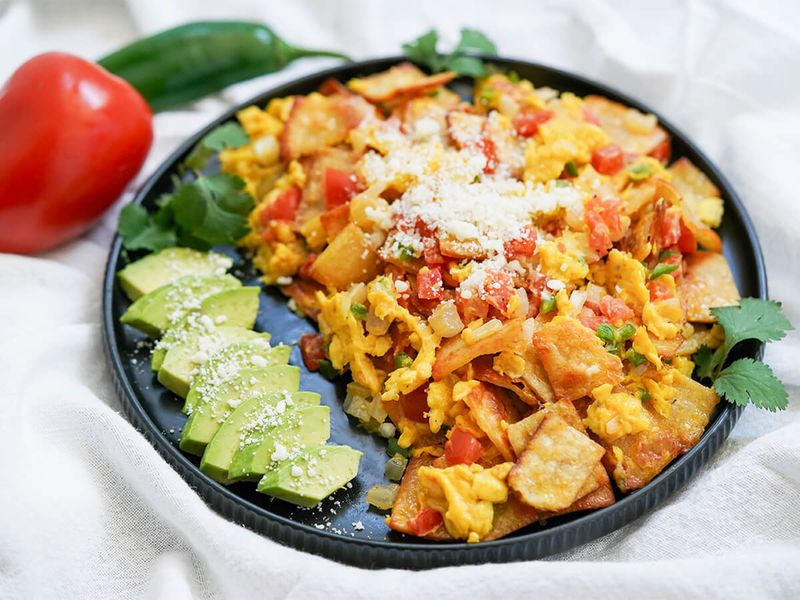
Long before breakfast tacos became trendy, Tex-Mex border towns were serving migas—a scramble of eggs, tortilla chips, peppers, onions, and cheese. The name comes from the Spanish word for “crumbs,” referring to the tortilla pieces mixed throughout.
Authentic migas should have a mix of textures: some tortilla bits stay crunchy while others soften in the eggs. Topped with fresh salsa, avocado, and sometimes refried beans on the side, it’s a breakfast that sticks with you.
Family-owned taquerias throughout Texas serve the most traditional versions, often with handmade flour tortillas for wrapping up each bite.
18. Fried Mush
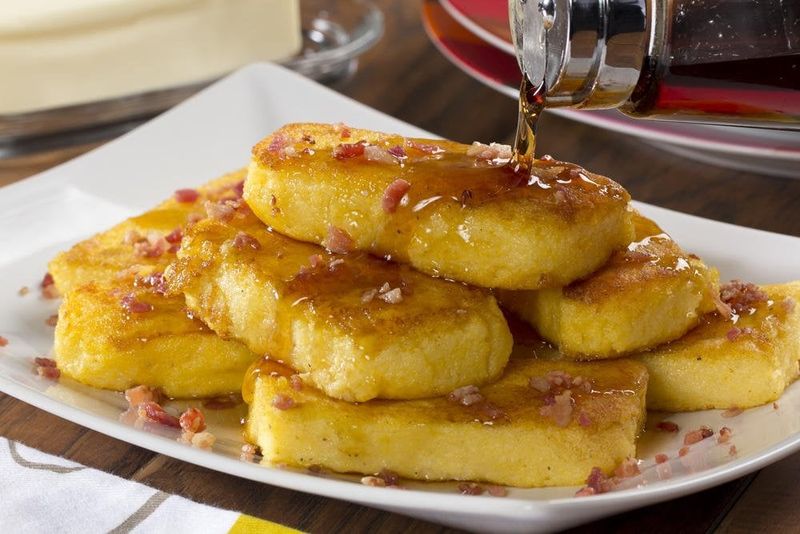
Midwestern families have been starting their day with this simple cornmeal dish since pioneer times. Cornmeal is cooked into a thick porridge, cooled in a loaf pan, then sliced and fried until golden and crispy.
The magic happens when you add toppings—some prefer the sweet approach with maple syrup or molasses, while others go savory with butter and salt. Either way, the contrast between the crunchy exterior and soft interior makes this humble dish special.
Look for fried mush in small-town diners throughout Indiana, Ohio, and Illinois, where it’s often listed on menus as a side dish rather than a main course.
19. Goetta
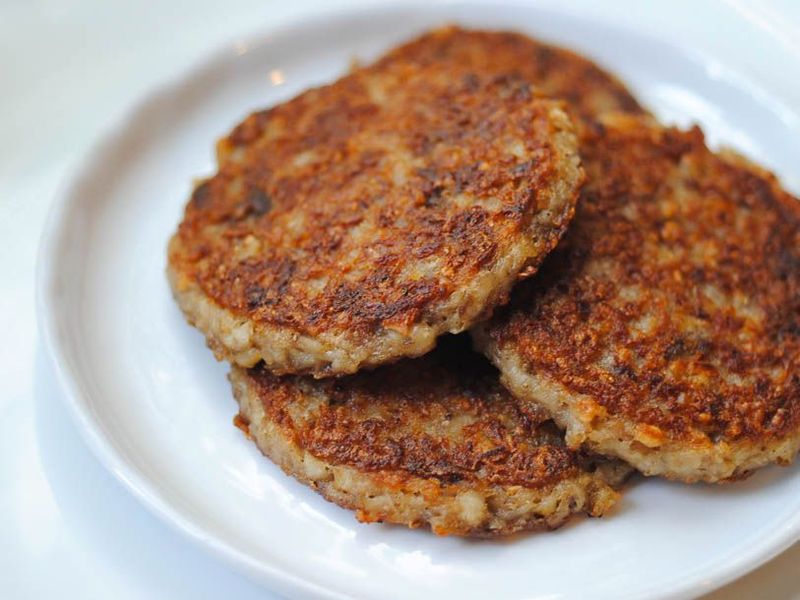
German immigrants in Cincinnati created this unique breakfast meat that stretches a small amount of pork and beef with steel-cut oats and spices. Formed into loaves and sliced, it’s then fried until crispy on the outside while maintaining a tender interior.
Unlike its cousin scrapple, goetta has a distinct texture from the chewy steel-cut oats. The seasoning is simple—usually just salt, pepper, and maybe a touch of sage—letting the meat and grain flavors shine through.
This regional specialty remains beloved in Cincinnati and northern Kentucky. Local butcher shops and diners compete for the title of best goetta, especially during the city’s annual Goettafest celebration.
20. Shrimp and Grits
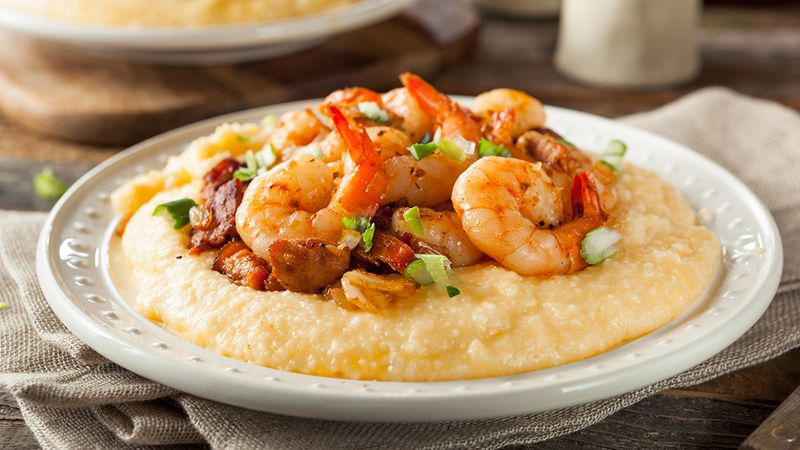
Once a simple fisherman’s breakfast in the Carolina Lowcountry, shrimp and grits has evolved into one of the South’s most beloved morning meals. The original version was just fresh shrimp cooked in bacon fat served over plain grits.
Traditional preparations keep it relatively simple—plump local shrimp, stone-ground grits (never instant), and a light sauce that might include butter, lemon, and perhaps a dash of hot sauce. The grits should be creamy but still have some texture from the stone-ground corn.
While now found on fancy brunch menus nationwide, the most authentic versions come from humble spots along the Carolina and Georgia coast.
21. Salt Cod Cakes
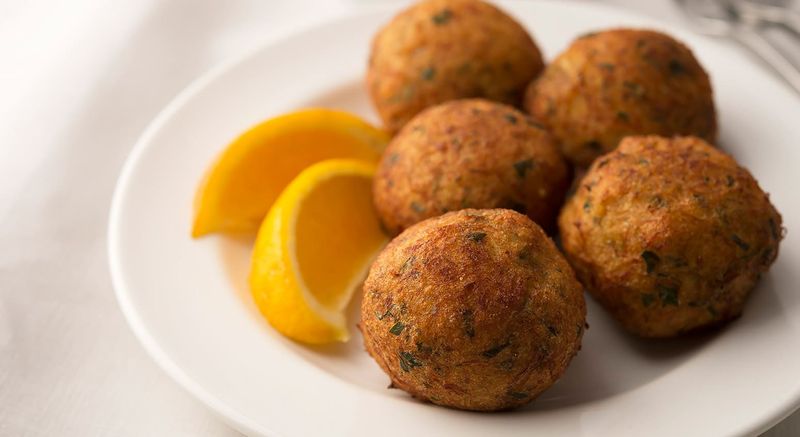
New England fishermen relied on preserved salt cod, which they mixed with potatoes and formed into patties for a hearty breakfast before heading out to sea. These golden-fried cakes have a crispy exterior and a flavorful, flaky interior.
Making them properly requires soaking the salt cod overnight to remove excess salt, then combining it with mashed potatoes, onions, and perhaps a bit of parsley. They’re traditionally served with a side of baked beans and brown bread on Sunday mornings.
This breakfast has nearly vanished except in a few coastal towns in Maine and Massachusetts, where fishing families still prepare them using recipes handed down for generations.
22. Liver Mush
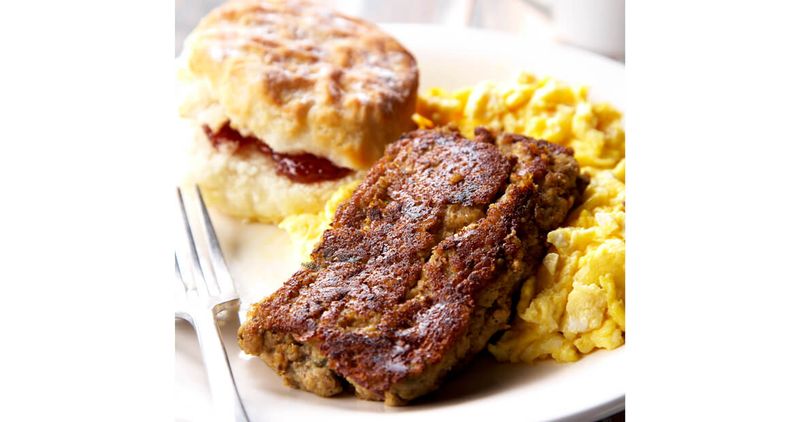
North Carolina’s answer to scrapple, this regional breakfast meat combines pork liver with cornmeal and spices. The mixture is formed into loaves, chilled, sliced, and then fried until crispy on the outside.
Despite the potentially off-putting name, liver mush has a mild flavor thanks to the cornmeal and spices like sage and black pepper. Locals enjoy it on a biscuit or with eggs and grits for a traditional Southern breakfast.
This specialty is still made by small butcher shops and meat markets throughout western North Carolina, particularly around Shelby, which hosts an annual Liver Mush Festival celebrating this unique regional food.
23. Shirred Eggs
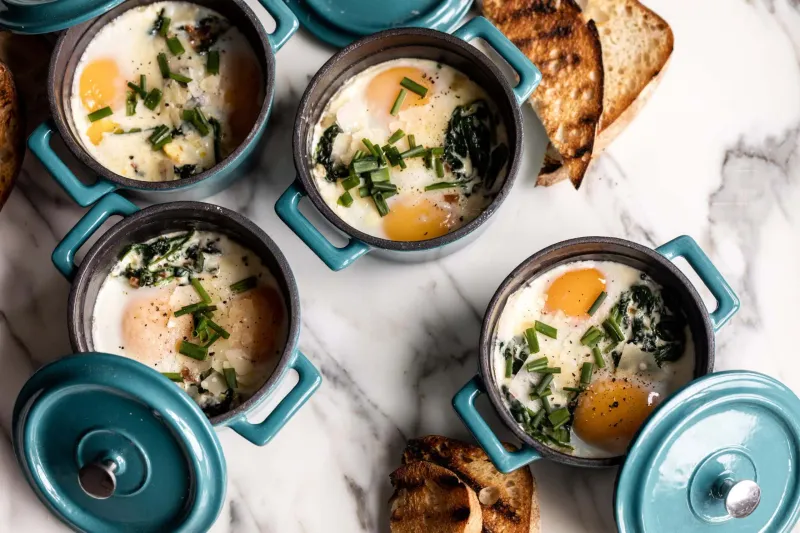
Before modern appliances, these individually baked eggs were a staple at elegant breakfast tables across America. Eggs are cracked into buttered ramekins, topped with cream and perhaps cheese or herbs, then baked until the whites are set but yolks remain runny.
The shallow dishes they’re baked in were once called “shirrers,” giving this preparation its name. When done correctly, the eggs have a delicate texture completely different from fried or poached eggs.
Historic inns and bed-and-breakfasts are the best places to find this nearly forgotten breakfast dish, often served with thin toast points for dipping into the creamy, runny yolks.
24. Flannel Cakes

Lighter and thinner than traditional pancakes, flannel cakes were once a breakfast staple in Appalachia and parts of the Midwest. Their name comes from their light, soft texture reminiscent of flannel cloth.
Made with a thinner batter that often includes beaten egg whites for extra lightness, these delicate cakes cook quickly and are typically served stacked high with butter melting between each layer. Traditional toppings include sorghum syrup or homemade fruit preserves rather than maple syrup.
Small-town diners in West Virginia, Kentucky, and parts of Ohio still make these the old-fashioned way, often using recipes that haven’t changed in a century.
25. Hangtown Fry
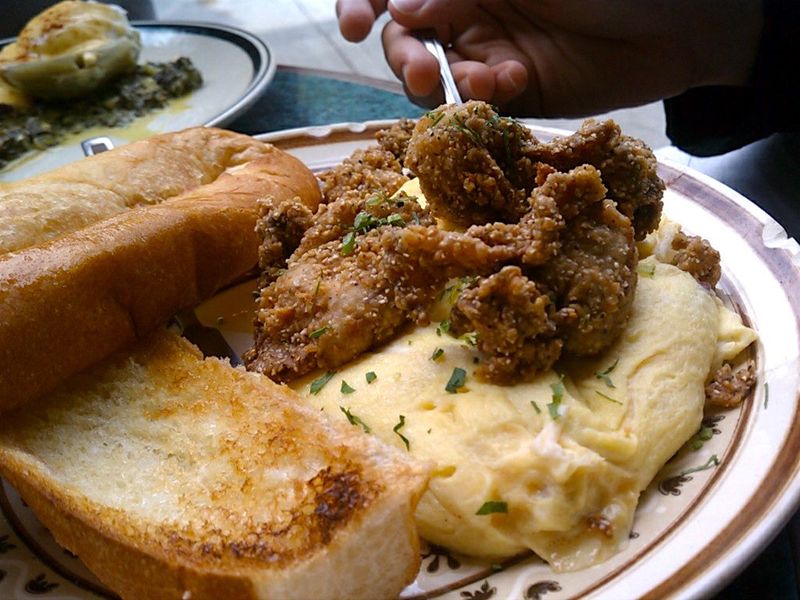
Born during the California Gold Rush when a prospector struck it rich and wanted the most expensive breakfast possible, this luxurious scramble combines eggs with oysters and bacon. The unusual combination became a status symbol among miners with newfound wealth.
The best versions use freshly shucked oysters lightly breaded and cooked just until their edges curl, then mixed with fluffy eggs and crisp bacon. Some traditional recipes add onions or bell peppers for extra flavor.
While now rare, this historic dish can still be found in old-school seafood restaurants in San Francisco and small towns throughout Northern California’s gold country.
26. Red Flannel Hash
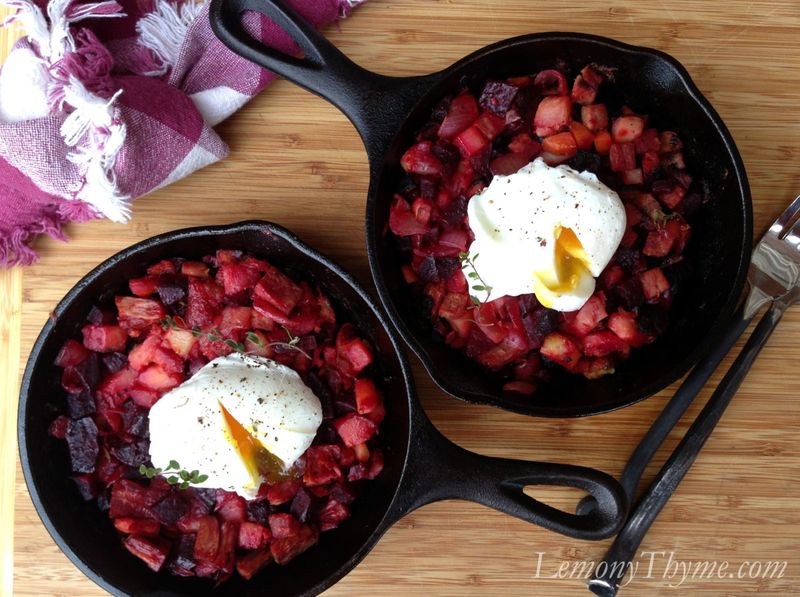
New England cooks created this colorful variation of corned beef hash by adding beets, which turn everything a distinctive reddish-pink color—resembling red flannel fabric. The dish was born from frugality, using leftover corned beef from New England boiled dinner.
Authentic versions combine diced corned beef, potatoes, onions, and beets, all fried together until crispy on the outside. Topped with a fried egg, the yolk creates a rich sauce when broken over the hash.
Vermont and New Hampshire diners are your best bet for finding this traditional breakfast, especially in small towns where recipes haven’t changed in generations.
27. Scotch Woodcock
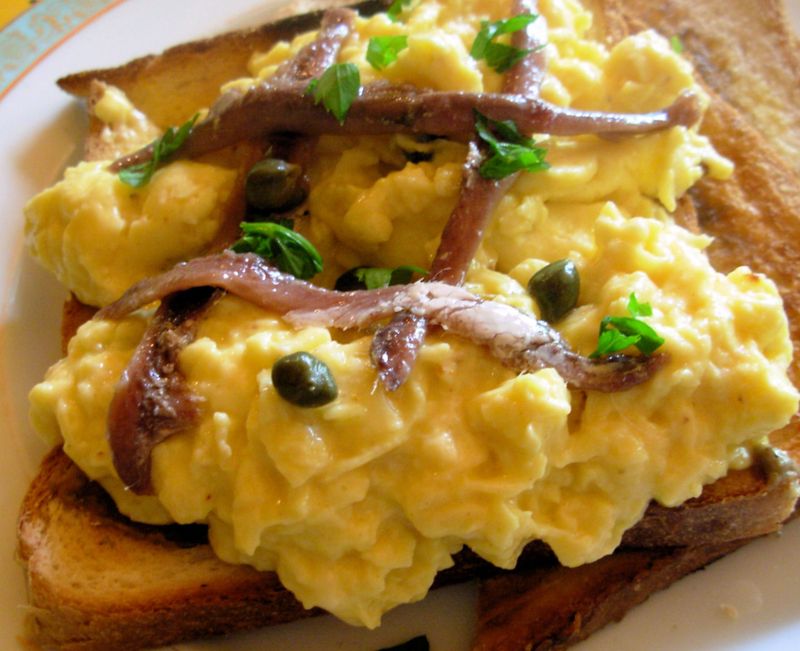
Despite the name, this British breakfast contains neither scotch nor woodcock. Instead, it’s a luxurious dish of scrambled eggs topped with anchovy paste on toast—a favorite in Victorian-era gentlemen’s clubs that made its way to upscale American hotels.
The eggs must be perfectly scrambled—creamy and soft, never dry or rubbery. The anchovy paste provides a salty counterpoint that surprisingly complements the rich eggs.
This forgotten breakfast delicacy occasionally appears on menus at historic hotels and traditional British-style restaurants. When made properly, it’s a sophisticated alternative to standard breakfast fare that harkens back to a more elegant era.
